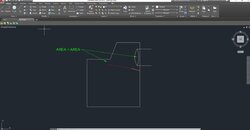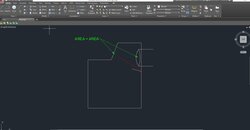Is this a straight up pipe configuration or are there elbows?
Is it single wall pipe from stove to chimney support box, and length of connector pipe run?
Spark screen at chimney top? (A little accumulation on a screen using 6 inch makes a huge difference).
This is all pipe configuration that adds resistance which reduces draft. The baffle adds resistance right in the firebox. (similar to a pipe damper adding a variable resistance) So it's very easy to add too much resistance depending on the draft the chimney creates.
An 8 inch flue doesn't create more draft, it has more capacity. Adding height increases draft, but there are limits and tables that give you an idea how much gain before height becomes detrimental.
No one can tell you if 6 inch will work fine in your installation not knowing details of installation and the building it is in. Putting this stove on a lower level with stairway to upper bedrooms, wall outside near chimney, slopped roof in a windy area....... All can create problems with smoke roll in when opening doors when reducing chimney size. (an air leak in a building above the stove can cause problems even with the correct size chimney) Best case scenario, they work fine reduced. You will see many for sale with reduction collars on the stove that have worked well for years.
It is no longer legal to reduce size smaller than stove outlet, that said it is not legal for a new install with an unlisted appliance as well. Personally I would use 6 inch double wall chimney, so you are ready for most any newer stove as well. IF someone wants to go that route some day. If you burn less than optimal wood such as I do, and need the greatly increased heat output all at once, you'll favor this stove over most anything new.
Length X Width of the opening you have at baffle edge gives you square inches of open space. For example 26.5 X 2 being 53 square inches is more than the minimum required 50.25 for 8 inch, and an opening of 26.5 X 1.25 being 33 square inches is more than the required 28.25 square inches for 6 inch flue. You just can't close it down smaller than the square inches of flue, and open it more as needed for things that reduce draft.
So make your baffle slightly larger than template and raise and lower to adjust to needed open space.
Use a pipe thermometer on single wall pipe just before it enters chimney. Surface temp is about 1/2 of actual flue gas temp, then you have an idea of temps at the top staying above 250*f. This is while smoke is present, not during coaling stage when there is no smoke particles to form creosote.
Is it single wall pipe from stove to chimney support box, and length of connector pipe run?
Spark screen at chimney top? (A little accumulation on a screen using 6 inch makes a huge difference).
This is all pipe configuration that adds resistance which reduces draft. The baffle adds resistance right in the firebox. (similar to a pipe damper adding a variable resistance) So it's very easy to add too much resistance depending on the draft the chimney creates.
An 8 inch flue doesn't create more draft, it has more capacity. Adding height increases draft, but there are limits and tables that give you an idea how much gain before height becomes detrimental.
No one can tell you if 6 inch will work fine in your installation not knowing details of installation and the building it is in. Putting this stove on a lower level with stairway to upper bedrooms, wall outside near chimney, slopped roof in a windy area....... All can create problems with smoke roll in when opening doors when reducing chimney size. (an air leak in a building above the stove can cause problems even with the correct size chimney) Best case scenario, they work fine reduced. You will see many for sale with reduction collars on the stove that have worked well for years.
It is no longer legal to reduce size smaller than stove outlet, that said it is not legal for a new install with an unlisted appliance as well. Personally I would use 6 inch double wall chimney, so you are ready for most any newer stove as well. IF someone wants to go that route some day. If you burn less than optimal wood such as I do, and need the greatly increased heat output all at once, you'll favor this stove over most anything new.
Length X Width of the opening you have at baffle edge gives you square inches of open space. For example 26.5 X 2 being 53 square inches is more than the minimum required 50.25 for 8 inch, and an opening of 26.5 X 1.25 being 33 square inches is more than the required 28.25 square inches for 6 inch flue. You just can't close it down smaller than the square inches of flue, and open it more as needed for things that reduce draft.
So make your baffle slightly larger than template and raise and lower to adjust to needed open space.
Use a pipe thermometer on single wall pipe just before it enters chimney. Surface temp is about 1/2 of actual flue gas temp, then you have an idea of temps at the top staying above 250*f. This is while smoke is present, not during coaling stage when there is no smoke particles to form creosote.



